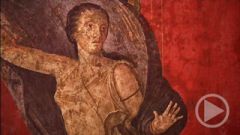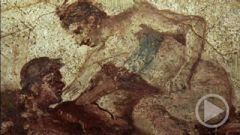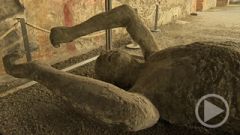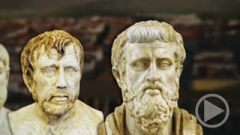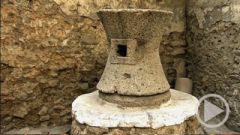Pompeii and Herculaneum – Treasure Troves of the Past
Treasure Troves of the Past
Mt. Vesuvius – its green slopes lie placidly in the sunshine. It’s hard to imagine this peaceful mountain as the site of a devastating catastrophe. Two thousand years ago the Bay of Naples was a gathering place for Roman high society. Emperor Tiberius even moved his court to the island of Capri. Lining the bay were luxurious villas belonging to Roman nobles, set among vineyards and olive trees. Between them lay the pretty towns that were vacation spots and commercial centers in the region – to the south of Vesuvius: Pompeii on the river Sarno. West of the mountain: Herculaneum, a fishing village that had become a resort for wealthy Romans.
The world is at peace, most people here make a decent living. Then on August 24th of the year 79 AD all hell breaks loose. A sudden column of smoke rises over Vesuvius. Few people even knew the mountain was volcanic – and now it spews death and destruction. A relentless hail of glowing rock drums down on Pompeii. Roofs cave in, entire houses are buried. Whoever doesn’t escape early on has no chance of surviving.Avalanches of glowing gases sweep down the slopes, eradicating all life.
One of the greatest natural disasters of antiquity, the eruption of Vesuvius brought an agonizing death to thousands of people – but for us, two millennia later, it left a treasure trove. In the streets of Pompeii and Herculaneum the past comes to life.
The Forum in the year 79 AD – this is the lively heart of the town. Here are the imposing public buildings ….and here is the market, where vendors and shoppers haggle and gossip beneath the stately columns. From the patrician attending the debate at the city council to the slave doing the household’s shopping; from the market vendor tending her stand to the housewife on her way to the baths – all Pompeians cross paths at the Forum.
We can IMAGINE life in Roman times, yet there is still so much that we do not know. The Forum is known to have been full of statues, but archaeologists have found virtually none of them. After the disaster, Emperor Titus sent a commission to Pompeii to coordinate relief efforts. Did its members dig up the valuable statues? Or was it the work of later treasure hunters? No one knows.
This spot was once the site of a temple – was it the Temple of Venus? She was the patron goddess of Pompeii, so she must have had a large shrine. And this one, near the Forum, is probably the best candidate – but, again, archaeologists are not certain.
Prof. Andrew Wallace-Hadrill, Master of Sidney-Sussex College, Cambridge:
"One of the things that fascinates me about Pompeii is: how difficult it is for us now, at a gap of 2000 years, to understand how space was used. It could be public space, big buildings off the Forum, and it can be rooms in a private house, […] it’s because life 2000 years ago in a very different culture and society is at an enormous distance from ourselves."
Nonetheless, the ruins tell us plenty of stories about life in the city. The Forum is a pedestrian zone – the streets leading to it are blocked off to traffic. The ox-drawn wagons and handcarts rattling through the neighbouring streets have left deep ruts over the course of the centuries. Pompeii is an ancient city.
The town is full of pulsating life. Vendors offer their wares as the craftsmen ply their trades and horses and heavily laden donkeys push their way through the crowds. Stores and workshops line the streets. The facades are colourful, with painted commercial signs, images of the gods and graffiti. That was one of the biggest surprises for the archaeologists who excavated here in the 18th century. No one had realized how colourful the ancient world was!
The National Archaeological Museum of Naples houses a statue of Marcus Holconius Rufus, a local bigwig in Pompeii during the reign of Emperor Augustus. The statue once stood here, erected by the city council in front of the biggest public baths. Holconius Rufus is wearing military dress – and archaeologists have found the remnants of paint on the garments. The whole figure was brightly colored. He stands in imperial pose – although he was just the mayor of a small town. But nothing was more important in Roman society than status. Prestige was everything.


